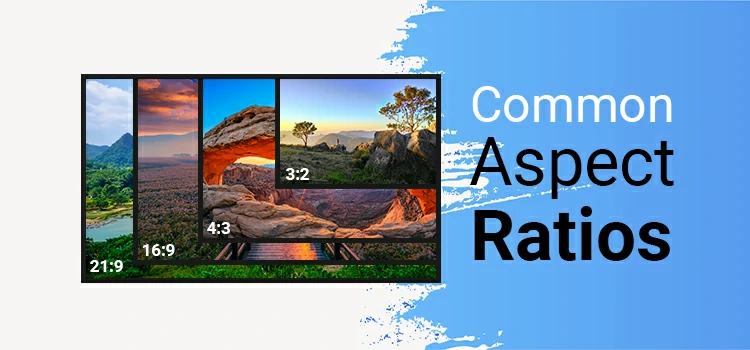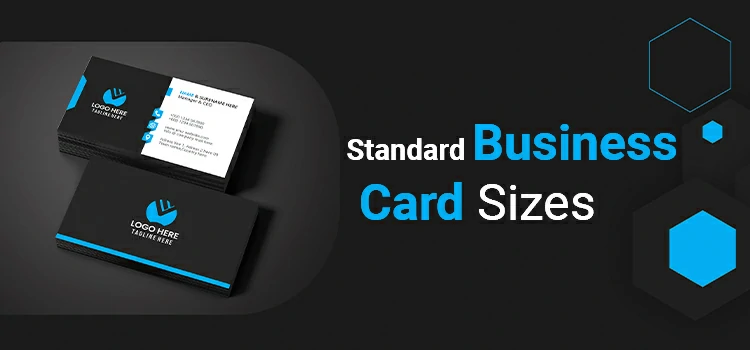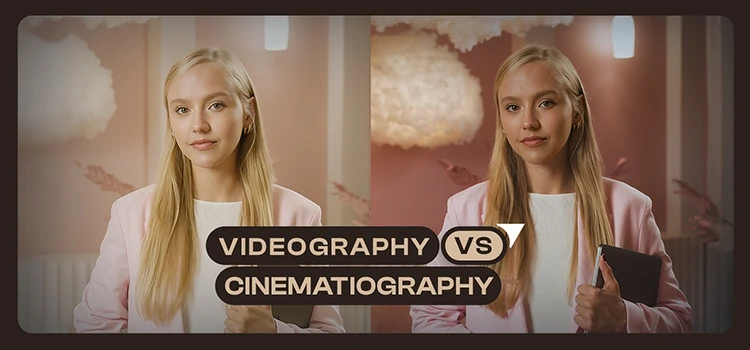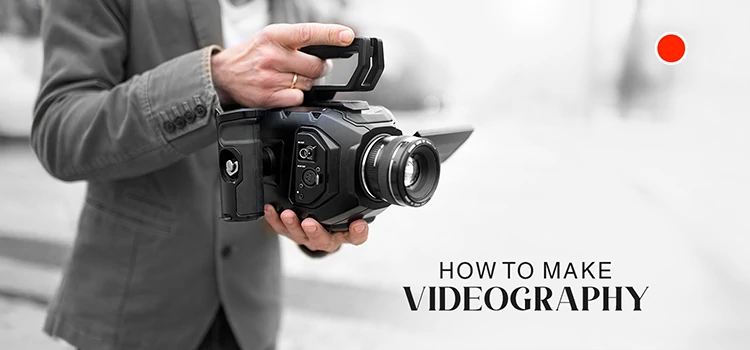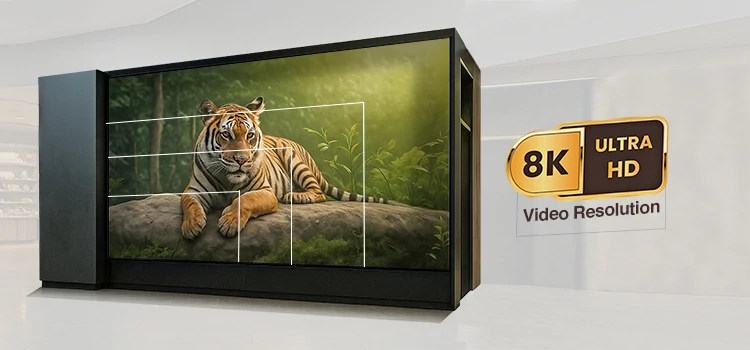4:3 Aspect Ratio Explained with Examples
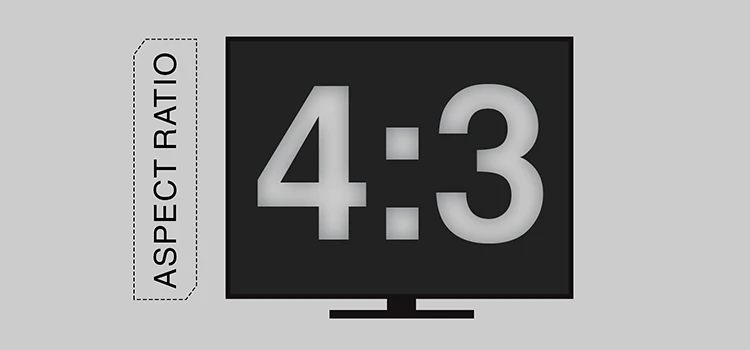
Remember the boxy TV sets of the ’90s? The ones that took up half your living room and played Friends or Harry Potter marathons in that slightly squarish frame? That was 4:3- the original aspect ratio that shaped how we saw the world for decades.
Fast forward to today, and everything’s wide. Ultra-wide monitors. Cinematic 16:9 videos. Social media reels stretched to the edges. We’ve been trained to think that bigger and wider is better.
But here’s the truth: 4:3 never really left.
It’s hiding in your camera settings. A secret weapon for indie filmmakers, it adds focus, intimacy, and a retro feel. In a world obsessed with panoramic views, 4:3 brings you closer. It’s not outdated; it’s underrated.
And in this post, we’ll show you why this “old-school” frame is making a serious comeback! Also, how you can use it to stand out in a crowded digital space.
The Takeaway: 4:3 isn’t better or worse; it’s different. While 16:9 dominates, and 9:16 rules mobile, 4:3 carves its own lane:
✔️ More headroom in vlogs
✔️ Cleaner screen recordings
✔️ Stronger subject focus
✔️ Aesthetic edge in a sea of sameness
Anatomy of the 4:3 Aspect Ratio
The 4:3 aspect ratio means that for every 4 units of width, there are 3 units of height. It’s a boxy rectangle; not square, not wide. Think of it like a classic photo frame or the old family TV from your childhood.
The 4:3 format offers better visual balance due to its greater vertical space. It suits images with height, like people or bookshelves. In contrast, 16:9 can squeeze or lose details in corners.
In the past, this ratio reflected how cameras and screens were made. 35mm film, CRT TVs, and early computer monitors all used a 4:3 design. It wasn’t a creative choice; it was the only option. Because of this, generations of filmmakers, photographers, and designers adapted to it.
Even the numbers behind it are practical. A 4:3 frame fits neatly into common resolutions like:
– 640×480 (VGA — the first standard for digital video)
– 800×600 (SVGA — your first computer screen)
– 1024×768 (XGA — the office meeting room favorite)
These aren’t random. They all follow the same 4:3 math. Clean, proportional, and easy to scale.
Now, compare that to 16:9, the widescreen king. It’s wider, yes. More cinematic. But it chops off top and bottom space. Want to show someone’s full posture in a video call? 4:3 does it better. Recording a tutorial with a browser window and toolbars? 4:3 keeps everything visible.
Here’s the real deal: 4:3 isn’t just a relic. It’s a format built for clarity, focus, and function. And once you notice how much content still works best in this frame, you’ll start seeing it everywhere, from Instagram posts to pro YouTube channels.
A Brief History of 4:3
Let’s take a quick trip back, no time machine needed.
The 4:3 aspect ratio originated from film and television. In the early 1900s, filmmakers used 35mm film with a near 4:3 frame. When TV emerged, engineers adopted this standard as it worked well with the human field of view and looked natural.
For over 50 years, 4:3 ruled. Your family photos, home videos, school project slideshows, and even the first seasons of The Simpsons — all born in 4:3. It was the default. The normal. The only way we watched, captured, and shared moving images.
Even early computers and digital cameras stuck with 4:3. Think of your first digital point-and-shoot — chances are, your photos came out in that slightly boxy, balanced rectangle. It wasn’t just practical; it felt familiar.
This ratio shaped how we composed visuals. Centered subjects. Tight framing. Clean layouts. No wasted space on the sides. Everything felt intentional.
The 2000s brought change. HDTVs and cinematic widescreen experiences replaced 4:3, labeling it “ancient” and “outdated”. But here’s the thing: just because something fades doesn’t mean it loses value. 4:3 didn’t die.
It just took a step back, quietly shaping design, photography, and storytelling in ways most people never noticed. And now? It’s making a comeback. Not as a backup plan. But as a bold creative choice.
Applications of 4:3 Aspect Ratio (History and Today)
The 4:3 aspect ratio continues to prove itself even as the emphasis of the world goes to widescreen formats. It continues to be relevant in the creative world both in history and contemporary practice. Let me point out where and how this time-honored format is being used today.
Television and Broadcast Media
TV’s golden age had a distinct charm. The 4:3 screen shaped how we watched shows from the ’50s to the early 2000s. Memories were made within that squarish frame – Friends on a couch, Mulder chasing aliens, or the Simpsons’ living room antics.
Photography
When you take still pictures with digital cameras or mobile phones, they often use a 4:3 ratio. Why? It frames the world visually and naturally. This ratio works well for vertical subjects like portraits because it creates a balanced composition. It’s even better because it provides more vertical data, allowing for creative cropping.
Cinematography and Filmmaking
- The 4:3 ratio is probably the most abused ratio and was, thus, most used for “retro” looks and intimacy.
- Zack Snyder’s Justice League was a 4:3 ratio for the purpose of attention focus and to still the IMAX framing.
- The Grand Budapest Hotel utilized it in flashback scenes for the purpose of indicating a new time period.
- Indies, especially, use it in the name of a more tactile, emotional feel.
Retro & Pixel Art Gaming
Designed for 4:3 monitors, classic 8-bit and 16-bit games still charm us. The NES, SNES, and original PlayStation set the standard for this aspect ratio. Retro games and emulators keep this style alive. This dedication to authenticity maintains the nostalgic feel of pixelated adventures. Each beloved character remains a cherished memory.
Presentations & Educational Content
Many PowerPoint templates (especially older ones) and educational video content still use or are compatible with 4:3. Why? Because older projectors, monitors, and lecture halls were all built for that format — and in many classrooms worldwide, they still are.
Mobile & Social Media Cropping
Discover a hidden gem: 4:3 is a versatile canvas for cross-platform content creation. Crop a 4:3 video, and voilà! You can effortlessly reshape it into vertical (9:16) or square (1:1) formats. No key detail left behind! This is why savvy YouTubers and TikTok creators film wide, then artfully edit from a 4:3-safe zone.
Digital Art & Document Templates
Some slide decks, portfolios, and display frames are still optimized for 4:3. Artists sometimes use the format for certain visual balance — especially when creating work meant to be printed or viewed on mixed-format devices.
Iconic 4:3 Moments in Media
4:3 was the norm in entertainment before widescreen. It framed some of pop culture’s most memorable moments, proving great storytelling needs focus, not width.
Here are a few iconic 4:3 moments that still hit hard:
The Office (US) – “That’s what she said.”
The mockumentary, framed in nostalgic 4:3, hit the sweet spot. Awkward close-ups turned every cringe into a laugh-out-loud gem. The camera captured sidelong glances, like conspiratorial winks, revealing secrets to the audience.
Super Mario Bros. on NES
Pixel-perfect platforming was built for 4:3. No side-scrolling distractions — just you, the screen, and Bowser at the end of the world. Classic gaming felt right because the aspect ratio matched the design.
The Lord of the Rings: The Two Towers – “One does not simply walk into Mordor.”
Even in early HD broadcasts and DVDs, this scene popped in 4:3. The vertical framing emphasized the scale of the map and the characters hunched over it — intimacy over spectacle.
Early YouTube – “Charlie Bit My Finger”
This viral phenomenon burst forth, shattering cinematic norms. A charming 4:3 home video, it’s raw, real, and perfectly fits an age of webcams and flip phones. By discarding high resolution, it reminds us that true connection is what truly matters.
The Legend of Zelda: Ocarina of Time (N64)
One of the greatest games of all time looked best in its native 4:3. The centered camera, the balanced HUD — it was designed for symmetry, not stretched widescreen.
4:3 vs Other Aspect Ratios: The Real-World Breakdown
Let’s cut through the tech jargon. Here’s how 4:3 stacks up against common formats — based on what actually works in real projects.
4:3
– Used in older TVs, school cameras, and mirrorless systems like Olympus and Panasonic
– Tall frame = more space above and below
– Perfect for solo creators, tutorials, and close-ups
– Looks “different” on modern screens — which can be a good thing
– Shows black bars on the sides when played on widescreen, but keeps full image
16:9
– The default for YouTube, laptops, and most videos
– Fits most screens without wasted space
– Feels familiar — but also kind of plain
– Cuts off too much top and bottom in some shots
– Safe choice, but not always the best
21:9
– Super wide — like movie trailers or epic landscapes
– Looks cinematic on big screens
– Needs special gear to shoot right
– Way too wide for phones or social media
– Often gets cropped or letterboxed
1:1 (Square)
– Big on Instagram grids and product shots
– Clean, centered, minimal
– Wastes space on phones and TVs
– Great for branding, not so much for action
9:16 (Vertical)
– Full-screen on TikTok, Reels, Stories
– Mobile-first, scroll-stopping
– Useless on desktop or TV without cropping
– Demands you shoot portrait — no cheating
The Future of 4:3: Obsolete or Overlooked?
Let’s be real — 4:3 isn’t coming back to replace widescreen. You won’t see Netflix switching all its originals to a boxy format anytime soon.
But calling 4:3 “obsolete”? That’s where most people get it wrong. The truth is, 4:3 isn’t dying. It’s evolving. It’s shifting from the default to a deliberate choice. And that’s actually more powerful.
In a digital world where every video looks wide and flashy, using 4:3 makes you stand out. It feels intentional. Nostalgic, sure, but also fresh. It’s like pairing retro sneakers with a modern outfit.
We’re already seeing this shift. Filmmakers use 4:3 to create tension, focus, and emotional depth. Photographers on Micro Four Thirds systems love its balanced composition. Educators and course creators shoot in 4:3 because it fits more of their screen — no awkward side cropping when recording tutorials.
Even on social media, platforms like Instagram and YouTube handle 4:3 just fine. In fact, a taller frame often performs better in mobile feeds, where vertical space matters more than width.
So no, 4:3 isn’t the future of everything. But it is the future of creative control.
The real trend isn’t about aspect ratios — it’s about choice. The most successful creators don’t follow defaults. They pick tools — including frame size — that serve their message.
And when you choose 4:3 today, you’re not stuck in the past. You’re making a statement: I’m not just filling the screen. I’m framing the story.
Final Thoughts
The 4:3 aspect ratio isn’t just a relic; it’s returning quietly. In a world of endless scrolling and wide videos, 4:3 stands out. Clear, balanced, and focused, this approach suits projects needing intimacy or a retro feel.
Why not dip your toes into something new? Give it a go! Film a vlog, create a tutorial, or capture a portrait in 4:3. Feel the shift in atmosphere and let inspiration spark!
To innovate, one must occasionally cast an eye to the past. Tweak what once flourished, and breathe new life into it. Reframe your approach; let your uniqueness shine. Make 4:3 your clever ally, and watch your creativity soar!



